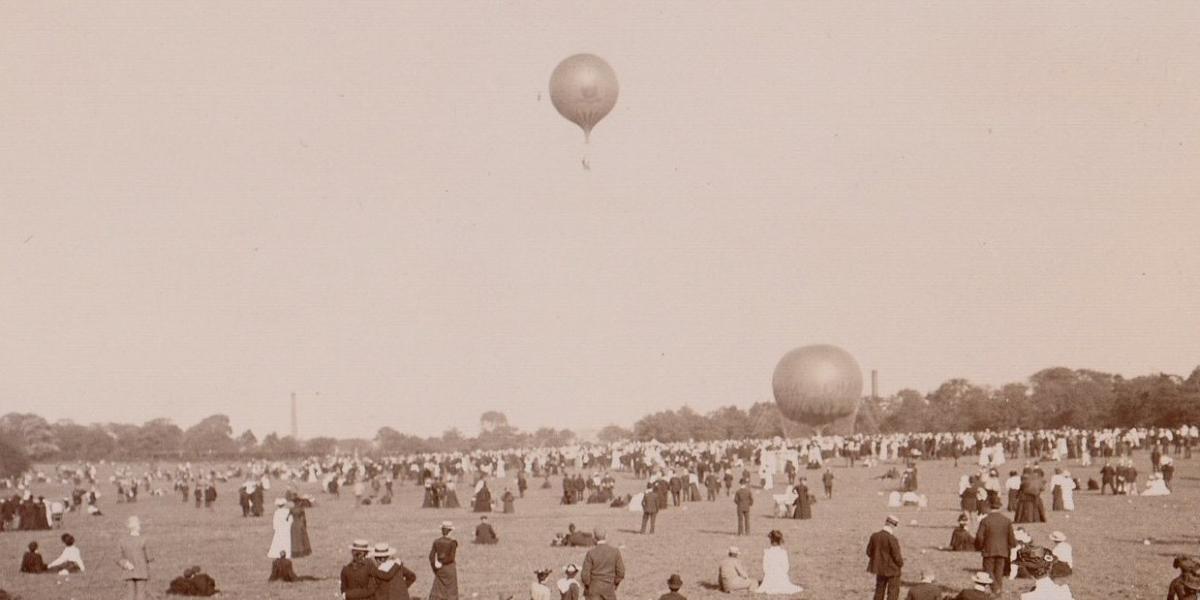Moor Park history
Moor Park is Preston's largest and oldest park, so it's safe to say it has a deep and rich history. The park was originally common land derived from the Royal Forest of Fulwood by the Charter of Henry II in 1235.
Known as Preston Moor, the area has been the centre of many of the town's historic and memorable events for hundreds of years.
King's Commission of Array
In 1642 a meeting held on the Moor to read the King's Commission of Array was attended by 5,000 people. A disagreement broke out between supporters of the King and those in favour of the parliamentary side, a precursor to the hostilities that were to break out in the country.
Battle of Preston 1648
During the Second English Civil War, Moor Park was one of the scenes for the Battle of Preston 1648. Here there was a four hour struggle between the New Model Army, under the command of Oliver Cromwell, and the Royalists and Scots, commanded by the Duke of Hamilton. The Battle of Preston was ultimately the finishing blow to the Royalist hopes in the Second Civil War.
Municipal Park
Between 1736 and 1833 horse races were held annually on Preston Moor, the course itself started at a large stone which is still in its original position today. It was then in 1833 Preston became the first of the new industrial towns to create a municipal park by enclosing some 100 acres of Preston Moor and renaming it Moor Park. The park already had an avenue of lime trees (known as Ladies Walk) on the south boundary of the park and the Serpentine Lake on the northern boundary. The park was very rough due to the grazing of freemen's cattle on this land.
Between 1862 and 1865 the park was landscaped by Edward Milner who was a notable landscape architect. Milner also designed Avenham and Miller Parks and Grange Park within the city, with the work carried out by cotton workers at the height of the cotton famine. The works involved many improvements and cost £10,826.
Sporting Activities
The inclusion of sporting facilities encouraged sports teams to locate to Moor Park. During 1867 a cricket team rented a wicket on the park. The team was Preston Nelson, better known now as Preston North End. A move to Deepdale Farm across Deepdale Road, and changing from cricket to rugby and football, marked the beginning of the city's historic football team.
Preston Open Air Baths
In 1905 Moor Park had a new feature, Preston Open Air Baths, which helped alleviate the pressure on Saul Street baths in the town centre during the summer months. The baths, and a children's paddling pool, were located at the North East corner of the park, from Sir Tom Finney Way to the Serpentine Lake. It is sad to say the open air baths were closed in the early 1970s.
First and Second World War period
During the First World War, the park became the site of a hospital for the war wounded. At the hospital's opening, in 1915, it was only suitable for just 35 patients. However, it continued to be extended over the years to include an operating theatre, specialist wards, a recreation room, and a nurse's hostel. By 1918 it catered for 270 patients, treating some 1,150 patients in its busiest year, and ultimately closing in 1919. The building continued to be used as a hospital for many years after this closure, but for treating contagious infections.
In the Second World War the park was the site of a prisoner of war camp, with no escapes committed there.
The Observatory
In 1927 the Observatory was located in the North West corner of the park. This was just in time for the 1927 total eclipse of the sun - one of a few that was visible by most of Britain. Today the observatory is owned by the University of Central Lancashire.
World distance walker
In 1986 Tom Benson became the new world champion distance walker by walking the perimeter of the park non-stop, covering a total of 415 miles. This broke his previous distance record of 309 miles. There were times when Tom would hallucinate, recalling seeing a fish swimming across the park's grass. However, Tom never gave up, even when suffering from back or ankle injuries. The Tom Benson stone sits on Moor Park in celebration of Tom's achievements.
Football Pitches
During 2004 improvements were carried out to the drainage of Moor Park's football pitches and a new football pavilion was built, following a fire which had destroyed the old pavilion. Funding for these works, which cost over half a million pounds, came from a partnership between The Football Foundation, Preston City Council, Lancashire County Council, and local schools.
These new facilities were officially opened in May 2005 by Sir Tom Finney and the Mayor of Preston.
Radio one big weekend
In May 2007 Moor Park hosted Radio 1's Big Weekend. Over 35,000 people descended on the park over two days to watch this free (ticketed) event. The event involved a raft of Radio 1 DJ's presenting some of the biggest names in pop music at the time.
Heritage Lottery restoration project
A restoration project was undertaken in 2016/17 to ensure Moor Park retains its charm and prestige. The following works are what have taken place:
- Refurbished the Bowls Pavilion as a café
- Refurbished the network of footpaths
- Re-created an ornamental garden
- Improved the car park
- Refurbished and renewed seats and other park furniture
- Refurbished major entrances and boundaries
- Upgraded the drainage on the cricket field and installed new wickets
- Created an area for events
*Images sourced from Preston Digital Archive.
Map address for Moor Park
Moor Park, Preston, PR1 6AS.




